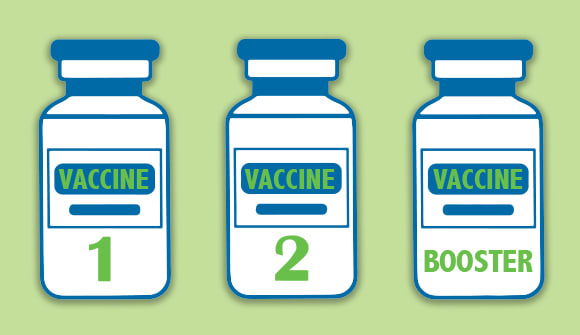Plug and play
How vaccines and boosters are adapted for new virus strains.
Article Author: Johnny Woodhouse
Article Date:

The U.S. Food and Drug Administration (FDA) recently authorized so-called bivalent boosters, which target both the original coronavirus strain and the currently dominant omicron subvariants BA.4 and BA.5. These new shots are expected to provide better protection against infection and transmission and longer-lasting defense against severe illness.
According to forecasts, these updated boosters have the potential to prevent 100,000 hospitalizations and up to 10,000 deaths.
The process of tweaking the composition of a vaccine to target a different variant or subvariant is not new and is akin to how the flu vaccine is reformulated every year to match the strain most likely to circulate that season.
“Once scientists determine the current flu strain, they can change the vaccine’s main antigen, a substance that stimulates the body to produce an immune system response, while keeping everything else in the original formula the same,” said Shalika Katugaha, MD, system director of Infectious Diseases for Baptist Health.
Laboratories can rapidly determine the genetic makeup of a virus and scientists can plug in this information to produce an updated messenger RNA (mRNA) vaccine. Because this mRNA plug-and-play technology works so fast, drug manufacturers like Pfizer-BioNTech and Moderna can deliver vaccines, like the newly updated omicron-specific COVID-19 booster shots, in a matter of months, not years.
Science behind strains
As viruses circulate, they continue to evolve and scientists need to keep up with these changes, Dr. Katugaha said. When BA.4 and BA.5 became the dominant circulating strains, the FDA directed drug companies to make a booster targeting the spike protein the subvariants share.
Bivalent vaccines restore antibody protection by training the immune system on both the newer and older versions of the virus, Dr. Katugaha said.
An annual rite
The Centers for Disease Control and Prevention (CDC) recommends everyone 12 and older should get an updated COVID-19 booster shot. To receive one, you must be two months removed from your last vaccine dose. Those who have had a recent COVID-19 infection may consider delaying a booster by three months from symptom onset or positive test since natural immunity is believed to last about that long.
For most people, the bivalent boosters can be administered at the same time as the flu vaccine and it’s OK to mix and match Pfizer-BioNTech and Moderna for the primary series and booster, according to the CDC. It's best to check with your primary care physician for individual guidance.
As scientists continue to update COVID-19 vaccines to target the dominant variant, the U.S. edges closer to the day when COVID-19 vaccination becomes a seasonal rite of the fall and winter.
“We are moving toward a time when COVID-19 will be like the flu – preventable and not disruptive to our social and economic lives,” Dr. Katugaha said.
At Baptist Health, we want to help keep our community informed about COVID-19. For more information about COVID-19 vaccines, visit baptist.com/covid19vaccine. Click here to find a vaccination location near you.



